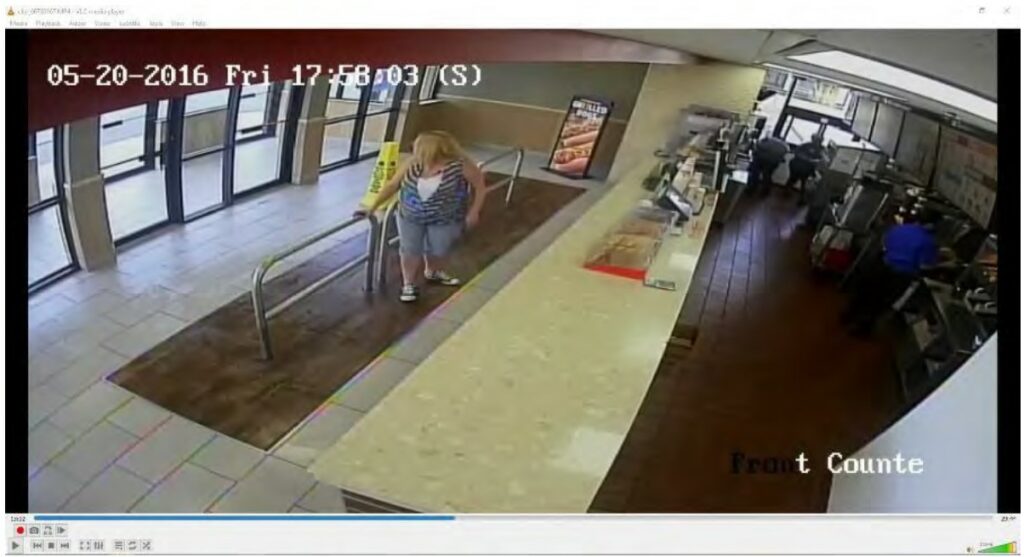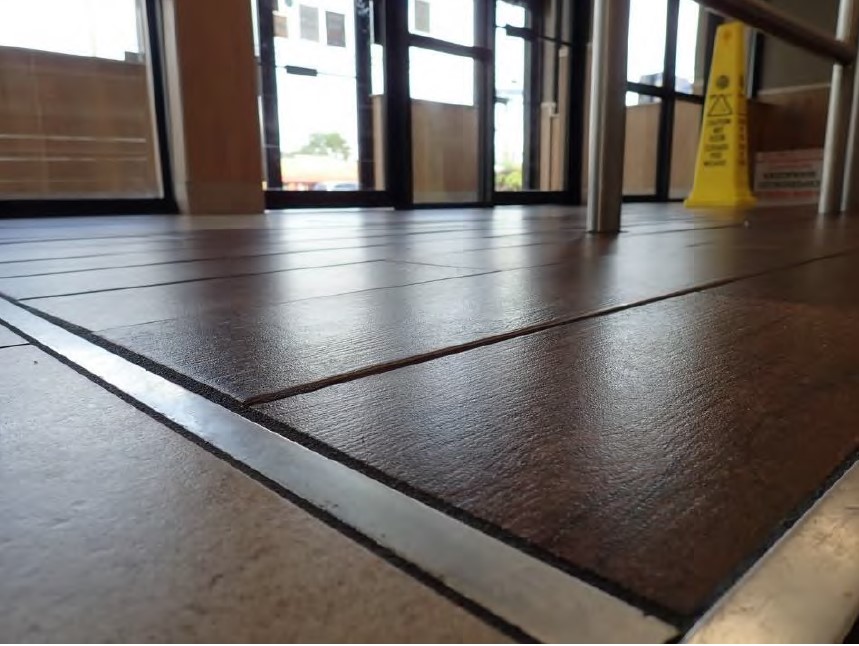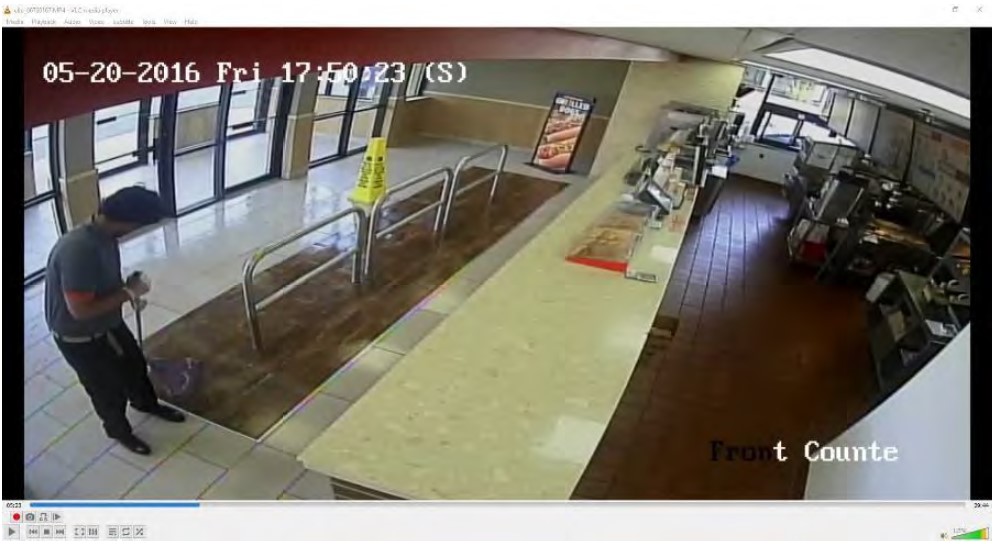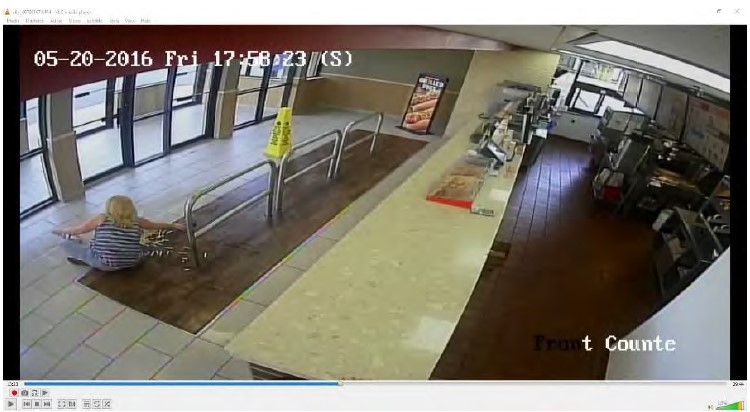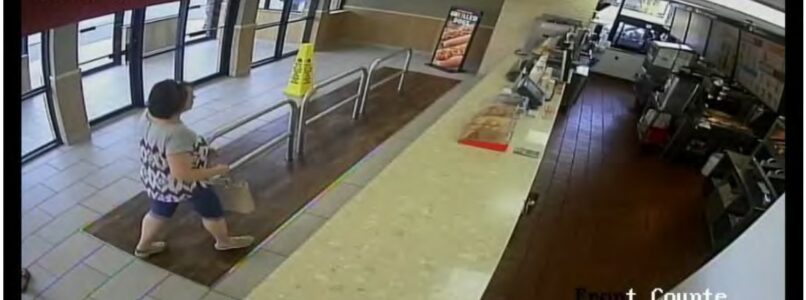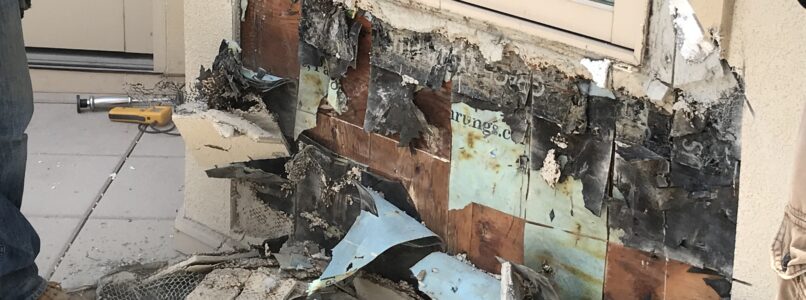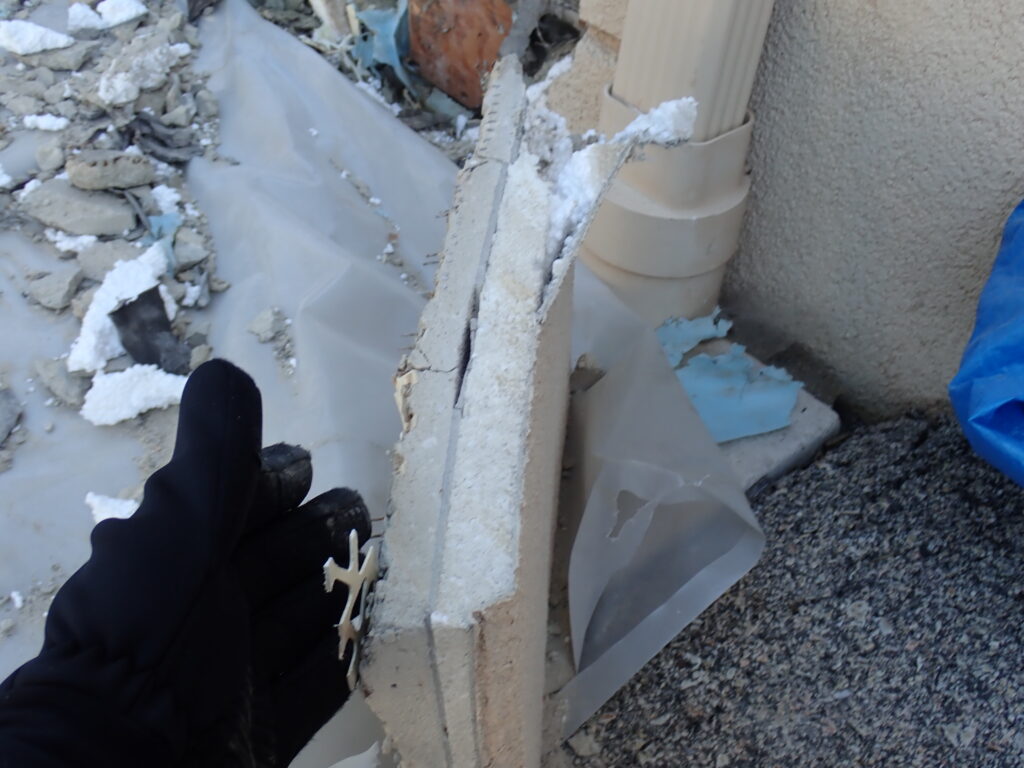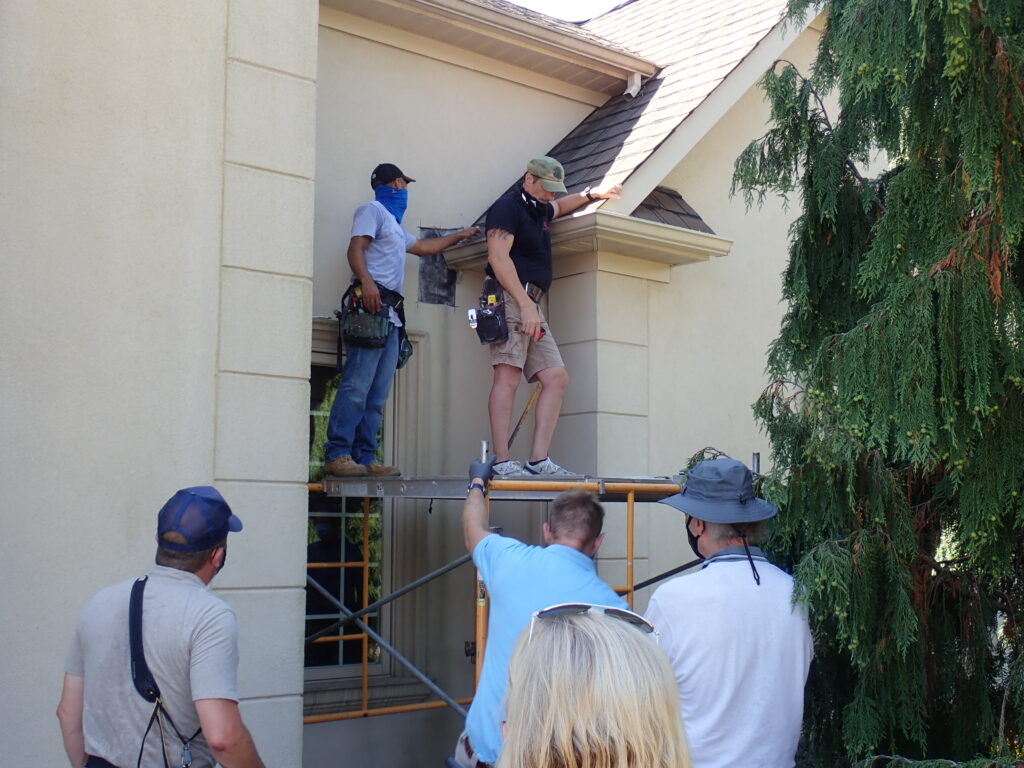Basic Fact Pattern
- Slip and fall on a recently mopped floor in a fast food restaurant.
- The floor tile involved was allegedly improperly designed, constructed, inspected, and maintained for such a facility.
- Specifically, the floor tile lacked adequate slip resistance, when tested wet with a BOT-3000e tribometer.
- The incident was captured on high resolution video surveillance, along with time both before and after the incident.
- It was also alleged that the plaintiff had not been adequately warned about the presence of a wet floor.
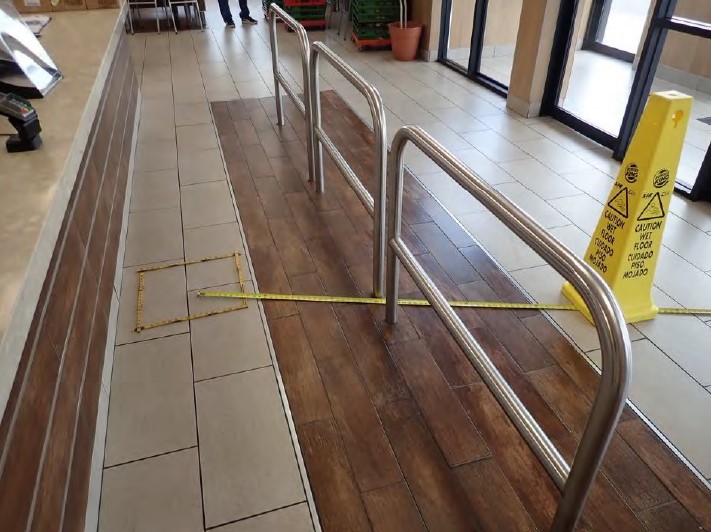
Investigative Actions Taken
- The details of the incident were extracted from the deposition testimony and documentation of multiple parties.
- The video surveillance footage was analyzed for:
- The timing of the mopping and the subsequent drying of the floor.
- The biomechanics involved in the fall event, as well as the plaintiff’s actions before and after the incident.
- The actions of others undertaken at or near the incident location, both before and after the incident.
- In the field, the position of the wet floor sign was re-created, after which analysis of the sight lines during all of the Plaintiff’s movements prior to the incident were analyzed.
- Measurements were also taken in the field, along with observations of the cleaning equipment and procedures.
- Code and construction information was reviewed for the floor tile at issue.
- Testing performed by others without our knowledge was reviewed against standards for the same.
Determinations Made
- The incident location was mopped eight times less than five minutes prior to the incident, with the “greasy substance” felt by the Plaintiff created by her spilled French fries.
- There was no scientifically credible evidence that any improper procedures had allowed the floor to remain “greasy” after it had just been mopped.
- The floor tile complied with the applicable building codes and properly applied standards.
- The tribometry testing performed by the opposing expert was scientifically invalid, due to a lack of adherence to the standards for the same.
- The opposing expert had also performed improper analysis of alternative codes and standards which did not apply.
- The Plaintiff had eight separate sight lines where the Wet Floor sign was unobstructed within her field of view, prior to falling reportedly with no knowledge that the floor was wet.
- The Plaintiff’s slip event initiated as a result of ill-fitted footwear, combined with an accelerated gait pattern (i.e., hurried walking), resulting in a slip event that was not consistent with the 10 other people shown in the video surveillance footage walking over the same incident location successfully while the floor was still wet.
Involved Experts:
